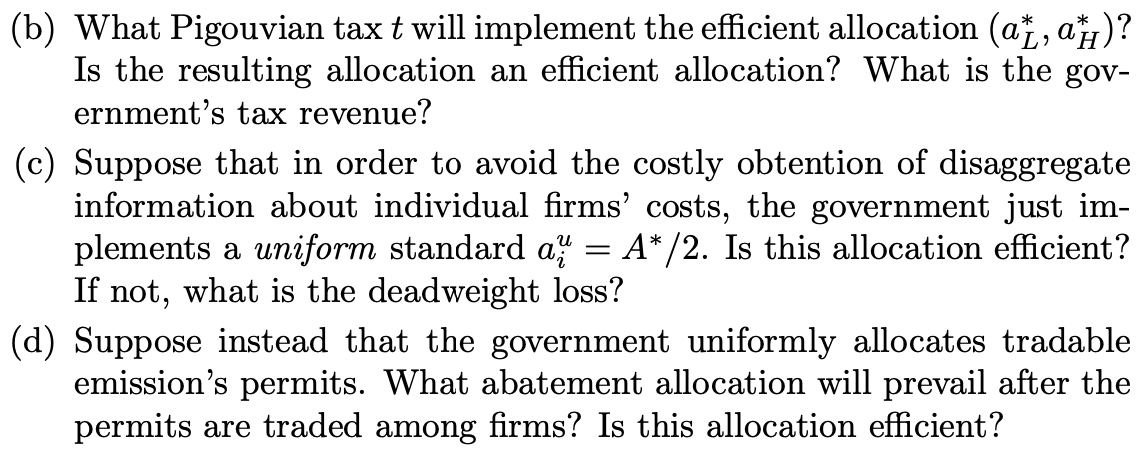Firms in a polluting industry can be classified in two groups: newer firms with a cleaner technology that can abate pollution at a lower marginal cost M CLA L = (1/2) aL and older firms with dirtier M CAH = aH , where ai is the level of abatement undertaken by firms of type i = L,H. The social marginal benefit of abating pollution from this particular industry is MBA = 120 - A, where A is the aggregate level of abatement in that industry: 1. What Pigouvian tax t will implement the efficient allocation (aL; aH )? Is the resulting allocation an efficient allocation? What is the government’s tax revenue? 2. Suppose that in order to avoid the costly obtention of disaggregate information about individual firms cost, the government just implements a uniform standard aui = A*/2. Is this allocation efficient? If not, what is the deadweight loss? 3. Suppose instead that the government uniformly allocates tradable emission’s permits. What abatement allocation will prevail after the permits are traded among firms? Is this allocation efficient?
Firms in a polluting industry can be classified in two groups: newer firms with a cleaner technology that can abate pollution at a lower marginal cost M CLA L = (1/2) aL and older firms with dirtier M CAH = aH , where ai is the level of abatement undertaken by firms of type i = L,H. The social marginal benefit of abating pollution from this particular industry is MBA = 120 - A, where A is the aggregate level of abatement in that industry:
1. What Pigouvian tax t will implement the
2. Suppose that in order to avoid the costly obtention of disaggregate information about individual firms cost, the government just implements a uniform standard aui = A*/2. Is this allocation efficient? If not, what is the
3. Suppose instead that the government uniformly allocates tradable emission’s permits. What abatement allocation will prevail after the permits are traded among firms? Is this allocation efficient?


Step by step
Solved in 5 steps with 12 images









